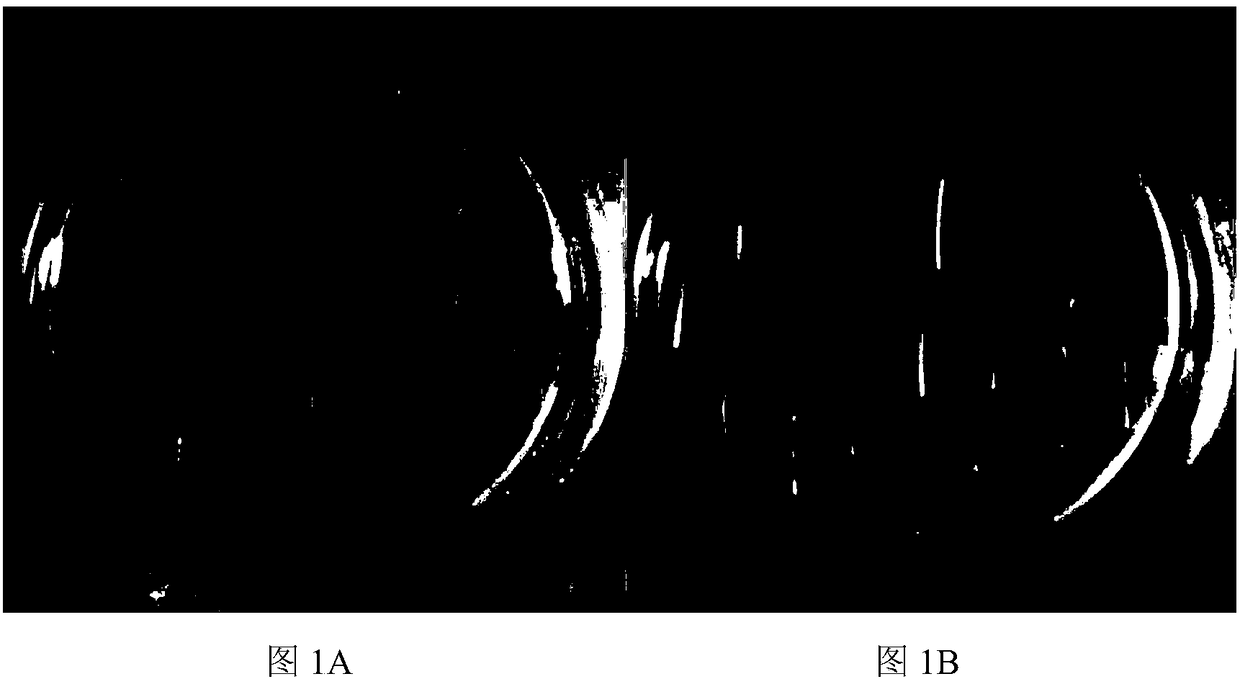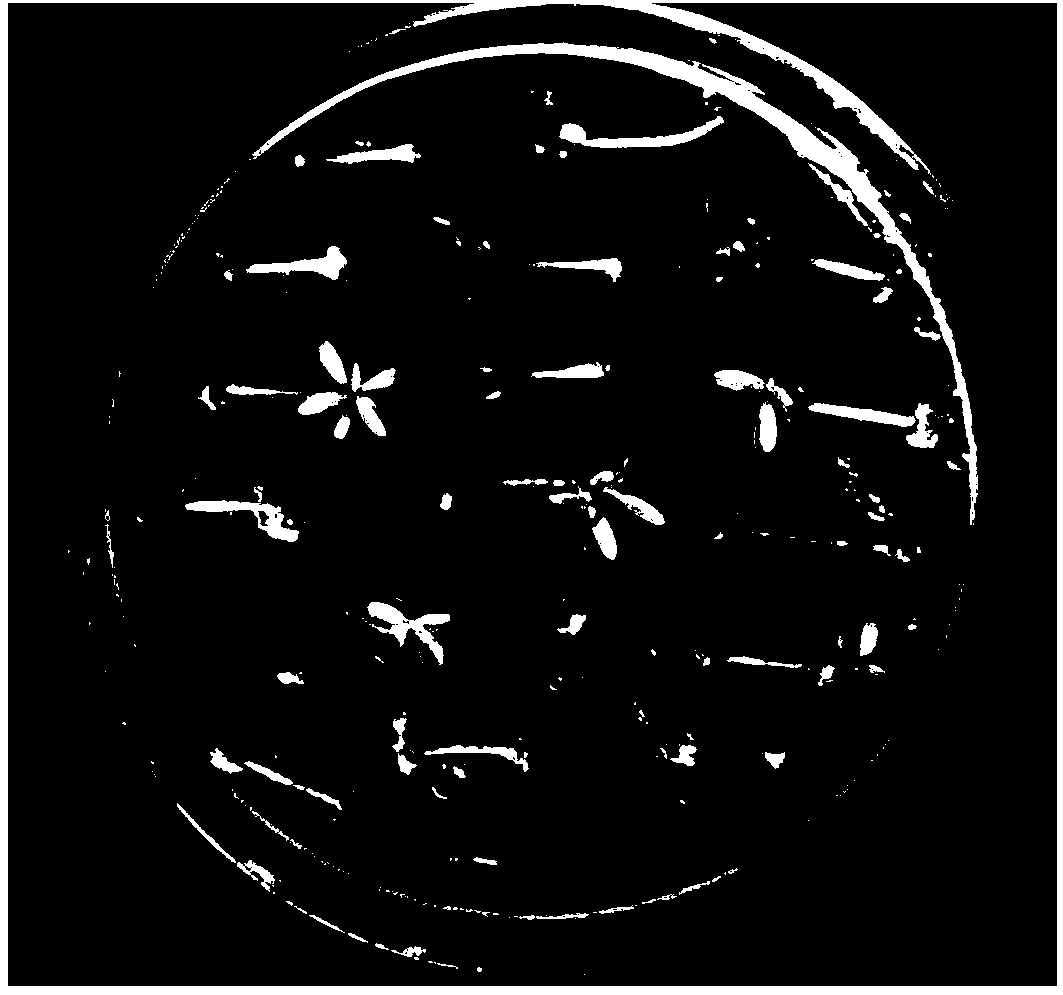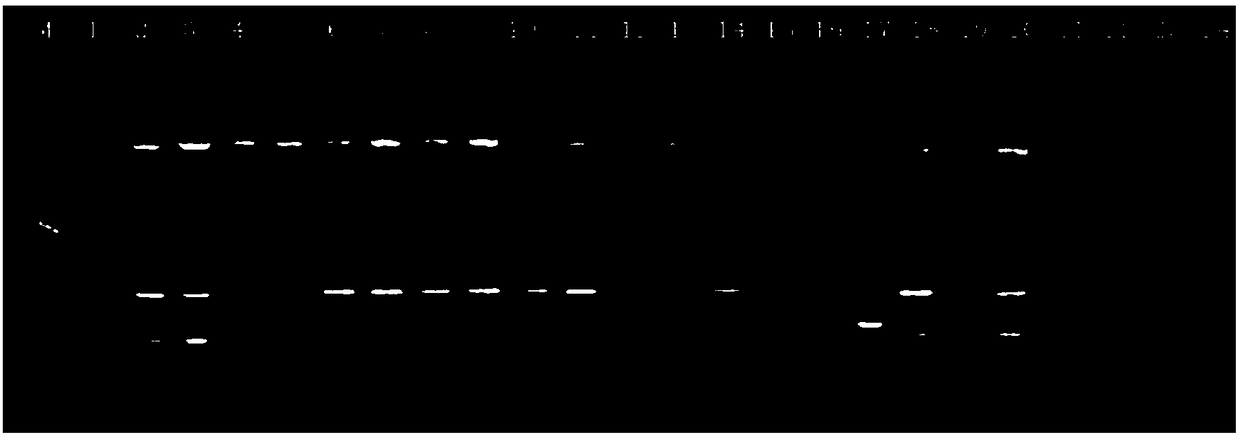Sodium azide mutagenizing method for juvenile citrus internodal stem segments
A technology of sodium azide, treatment method, applied in horticultural methods, botanical equipment and methods, chemicals for biological control, etc., can solve problems such as difficult mutants, instability, etc. The effect of simplicity and easy detection method
- Summary
- Abstract
- Description
- Claims
- Application Information
AI Technical Summary
Problems solved by technology
Method used
Image
Examples
Embodiment 1
[0045] A sodium azide mutagenesis treatment method for juvenile citrus internode stem segments, comprising the steps of:
[0046] Step 1. Mutagenesis treatment solution configuration: Weigh an appropriate amount of sodium azide and add it to a 0.1mol / L potassium phosphate buffer solution with a pH value of 3.00 (±0.05), and configure the final concentrations to be 0mmol / L and 0.5mmol / L respectively. Mmol / L, 1mmol / L, 2mmol / L and 5mmol / L mutagenesis treatment solutions. When using mutagenesis treatment solution, add surfactant Silwet L-77 (final concentration: 0.5%).
[0047] Step 2. Peel off the outer testa of the citrus seeds in the ultra-clean workbench, sterilize with 1% NaClO for 10 minutes, discard the NaClO liquid in the ultra-clean workbench, rinse 3 times with sterile water and place them overnight at 4°C before sowing in MS medium (pH 5.7). After sowing, cultivate in the dark for about 20 days, and then culture in the light. The light culture conditions are: 12h ligh...
Embodiment 2
[0055] A sodium azide mutagenesis treatment method for juvenile citrus internode stem segments, comprising:
[0056] Step 1. Mutagenesis treatment solution configuration: Weigh an appropriate amount of sodium azide and add it to a 0.1mol / L potassium phosphate buffer solution with a pH value of 3.00 (±0.05) to configure a mutagenesis solution with a final concentration of 2mmol / L treatment fluid. When using mutagenesis treatment solution, add surfactant Silwet L-77 (final concentration: 0.5%).
[0057] Step 2. Peel off the outer testa of the citrus seeds in the ultra-clean workbench, sterilize with 1% NaClO for 10 minutes, discard the NaClO liquid in the ultra-clean workbench, rinse 3 times with sterile water and place them overnight at 4°C before sowing in MS medium (pH 5.7). After sowing, cultivate in the dark for about 20 days, and then culture in the light. The light culture conditions are: 12h light / 12h dark, light intensity 40μmol·m - 2 the s -1 , cultured for 10 day...
Embodiment 3
[0062] A sodium azide mutagenesis treatment method for juvenile citrus internode stem segments, comprising:
[0063] Step 1. Mutagenesis treatment solution configuration: Weigh an appropriate amount of sodium azide and add it to a 0.1mol / L potassium phosphate buffer solution with a pH value of 3.00 (±0.05) to configure a mutagenesis solution with a final concentration of 1mmol / L treatment fluid. When using mutagenesis treatment solution, add surfactant Silwet L-77 (final concentration: 0.5%).
[0064] Step 2. Peel off the outer testa of the citrus seeds in the ultra-clean workbench, sterilize with 1% NaClO for 10 minutes, discard the NaClO liquid in the ultra-clean workbench, rinse 3 times with sterile water and place them overnight at 4°C before sowing in MS medium (pH 5.7). After sowing, cultivate in the dark for about 20 days, and then culture in the light. The light culture conditions are: 12h light / 12h dark, light intensity 40μmol·m - 2 the s -1 ) 10d, the growth tem...
PUM
 Login to View More
Login to View More Abstract
Description
Claims
Application Information
 Login to View More
Login to View More - R&D
- Intellectual Property
- Life Sciences
- Materials
- Tech Scout
- Unparalleled Data Quality
- Higher Quality Content
- 60% Fewer Hallucinations
Browse by: Latest US Patents, China's latest patents, Technical Efficacy Thesaurus, Application Domain, Technology Topic, Popular Technical Reports.
© 2025 PatSnap. All rights reserved.Legal|Privacy policy|Modern Slavery Act Transparency Statement|Sitemap|About US| Contact US: help@patsnap.com



